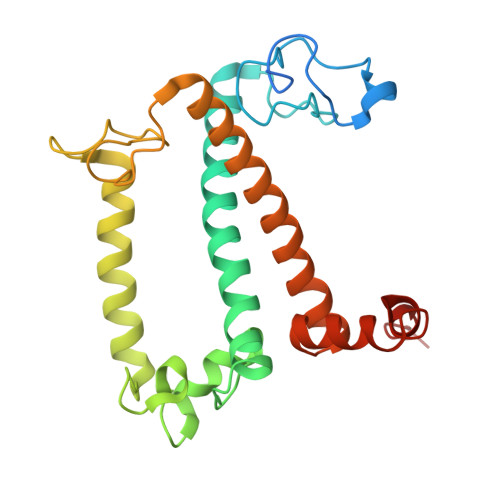Structure and assembly mechanism of plant C2S2M2-type PSII-LHCII supercomplex
Su, X., Ma, J., Wei, X., Cao, P., Zhu, D., Chang, W., Liu, Z., Zhang, X., Li, M.(2017) Science 357: 815-820
- PubMed: 28839073
- DOI: https://doi.org/10.1126/science.aan0327
- Primary Citation of Related Structures:
5XNL, 5XNM, 5XNN, 5XNO - PubMed Abstract:
In plants, the photosynthetic machinery photosystem II (PSII) consists of a core complex associated with variable numbers of light-harvesting complexes II (LHCIIs). The supercomplex, comprising a dimeric core and two strongly bound and two moderately bound LHCIIs (C 2 S 2 M 2 ), is the dominant form in plants acclimated to limited light. Here we report cryo-electron microscopy structures of two forms of C 2 S 2 M 2 (termed stacked and unstacked) from Pisum sativum at 2.7- and 3.2-angstrom resolution, respectively. In each C 2 S 2 M 2 , the moderately bound LHCII assembles specifically with a peripheral antenna complex CP24-CP29 heterodimer and the strongly bound LHCII, to establish a pigment network that facilitates light harvesting at the periphery and energy transfer into the core. The high mobility of peripheral antennae, including the moderately bound LHCII and CP24, provides insights into functional regulation of plant PSII.
Organizational Affiliation:
National Laboratory of Biomacromolecules, CAS Center for Excellence in Biomacromolecules, Institute of Biophysics, Chinese Academy of Sciences (CAS), Beijing 100101, P.R. China.

























